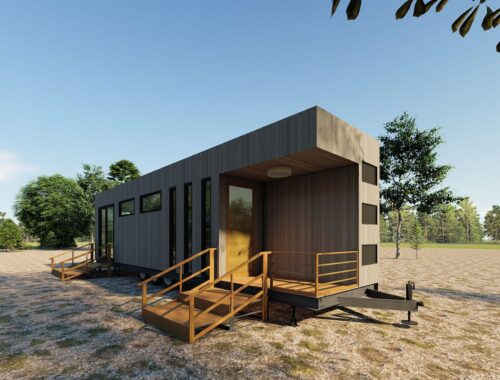Ditching Your Phone Will Change How You Recreate
Guide apps and GPS tools can be vital for off-grid adventures. But relying on them too heavily means we miss out on hidden gems that aren’t online.
The first time my wife, Jen, and I brought Artemis the Airstream to Gold Canyon, Arizona, a retirement community pressed up against the Superstition Mountains southeast of Phoenix, I wanted to leave almost the moment I arrived. The problem wasn’t the camping: We had found a pretty, tucked-away site on state trust land where we happily could stay the full allowable two weeks. But at the time, I was training for a mountain bike race, and that first night, when I looked on my favorite online sources for trails in the area (Strava, MTB Project, Trailforks), I could find just one lonely, short piece of singletrack, which would never suffice.
“Let’s not unhitch,” I implored Jen. “We can leave early tomorrow and find something better.”
Jen’s good at managing me. “Maybe we should just have a look around in the morning.”
Grudgingly, I pedaled out early, expecting to do a quick out-and-back on the sole trail I’d found and get back to camp in time to go look for something else while temps were still cool. A half-mile in, however, a spur trail that wasn’t on my GPS download came in from the right. Curious, I took it. Another mile along, I came to a three-way junction, and I turned again. The trails continued to twist and splinter, and before I knew it, I’d been riding for several hours and hadn’t once doubled back. According to the internet, this trail didn’t even exist. Yet here I was carving mile after blessed mile of desert singletrack.
In this age of smartphones, handheld downloads, and pervasive information, it’s easy to believe that if you can’t see trails on a screen, there’s no point in looking. Don’t get me wrong: I love technology. We use a host of mapping tools to locate and curate our campsites, we own a Garmin 35T that lives exclusively in Artemis to help us navigate, and I believe devices like these make it easier and safer than ever for people to get deep into the backcountry.
At the same time, as I found in Gold Canyon, these devices can also become stumbling blocks. I’m frequently amazed by how many great trails and hikes aren’t documented. In southern Colorado, after a couple weeks camping in the forests near the village of Platoro, I noticed a falling-down brown trailhead sign. There was no trail visible from the road, but once I hiked in a few hundred yards, I discovered a sinuous singletrack that climbed away onto a ridge. It looked like, other than elk and deer, I was the only one to have used the trail in years. And in northern New Mexico this spring, Jen and I finally stopped and explored an uncharted spot called Martinez Canyon, which we’ve driven past time after time, and discovered not just great riding but also some amazing forest service campsites.
As #roadlifers, we tend to rely heavily in our devices, often so much so that they become restricting. Because most pay sites and parks require reservations, many people fall into the trap of booking their every move for weeks into the future. That helps avoid a lot of uncertainty—and the hassle of getting stuck in spots where you can’t turn around—but it also quashes some of the spontaneity that makes life in a trailer or van so different from being tied down in a house.
Waking after a week or two at a camp spot, hitching up, and rolling forward to discover where the highway will take you is one of the great satisfactions of road life. It won’t always work out—we’ve had our share of suboptimal nights—but the good news is you always have your food and a comfy bed with you, so a bad night can never really be that bad. And on the good nights, you’ll find yourself all alone at a forest site in a place that, a few hours earlier, you had no idea even existed.
Plan a two- or three-day period where you don’t overthink the trip. Put your finger somewhere on a (paper) map, resist the urge to look up anything about the place, and just go. If you are on the road from point A to point B, cut your day short and stop somewhere along the way. Jen and I once made an unplanned stop in Del Norte, Colorado, and discovered a trail network that was so good we stayed a few extra days.
The key to such finds is being open to possibilities. I’m not saying you should completely ditch your GPS and iPhones. They are tools that quite often enhance our experiences. But from time to time, switch them off. Go out for a ride or a hike in a place you don’t know, and let yourself get lost. Drive up that disused side road and see if there’s somewhere good to stay. You may be surprised what you find.
You May Also Like

コンテナハウスの魅力と活用方法
March 14, 2025
Sprunki: Unveiling the Mysteries of a Hidden World
March 20, 2025